Week Eleven: Conceptual Portrait
For my final project, I wanted to explore the theme of communication. I thought it would be interesting to play a game of ‘telephone’ (which is played verbally: one person says something to someone, and they pass the message along to the next person, and so on) but through the medium of drawing.
To me, all the subtle (and not-so subtle) changes in the artwork as it is passed along from person to person reflect each person’s attitudes and thoughts. What details did they include? What did they leave out? Is there anything they missed? Upon completion, are they happy or unhappy with it? Much like in verbal communication, this task was performed without any do-overs. The first take is it, and, essentially, what’s said is said.
My instructions were simple. Everyone was required to secure a blank piece of paper and a black pen. I told them that when they were ready I would send their image. When they received their image, they were told to ‘recreate it’, without any other details. I asked that once they begin the project, they see it through to the end. And then, upon completion, to please take as good of a photo as they could to send it over.
*I edited the photos in photoshop so that they would all look similar (so that things like contrast and light balance wouldn’t be distracting).
I think it’s worth spending time with each drawing before moving on to look at the next, which is why I am presenting it like this, instead of in a collage.
Without further rambling, I’ll present all of the images in chronological order, beginning with my drawing.
Communication
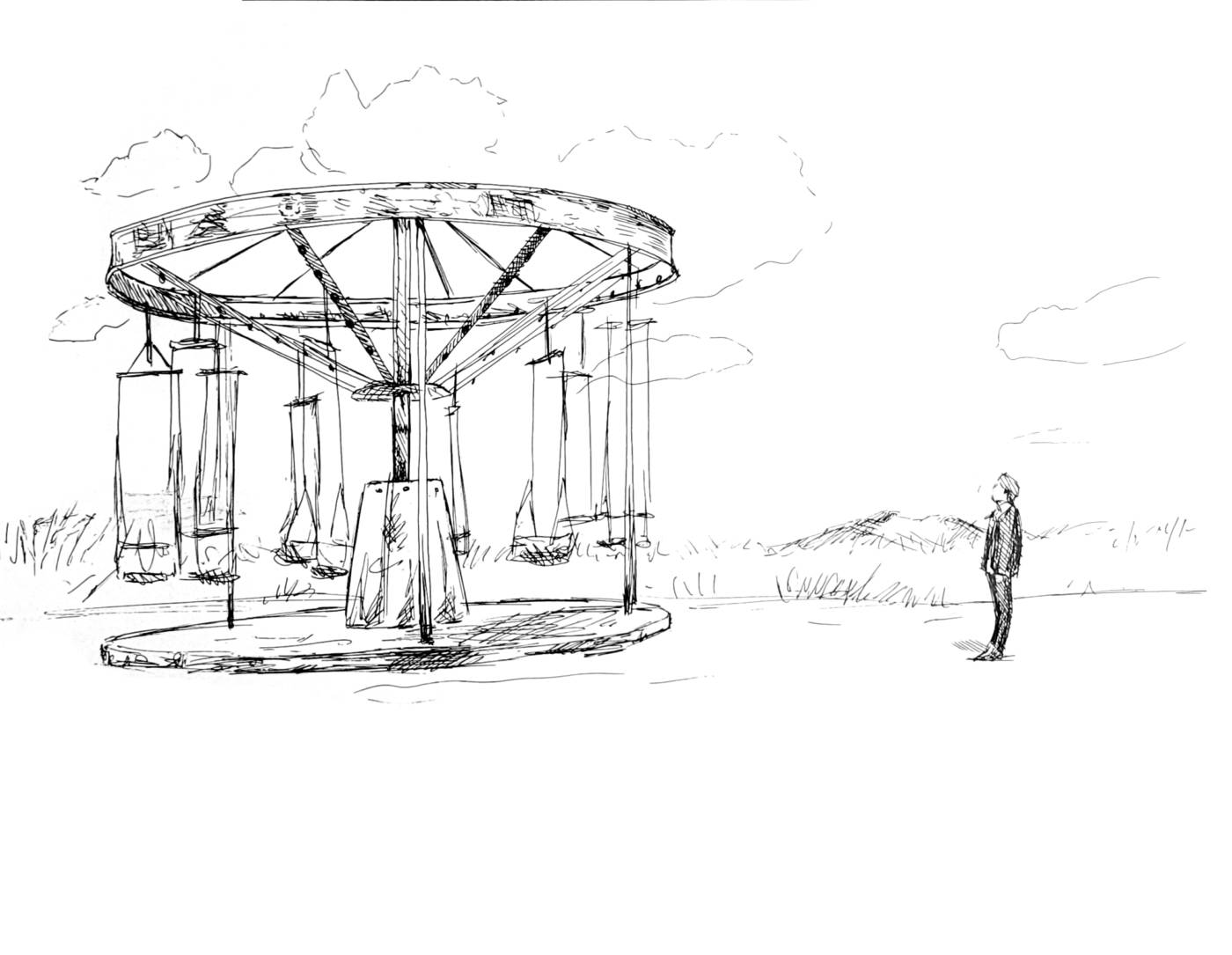
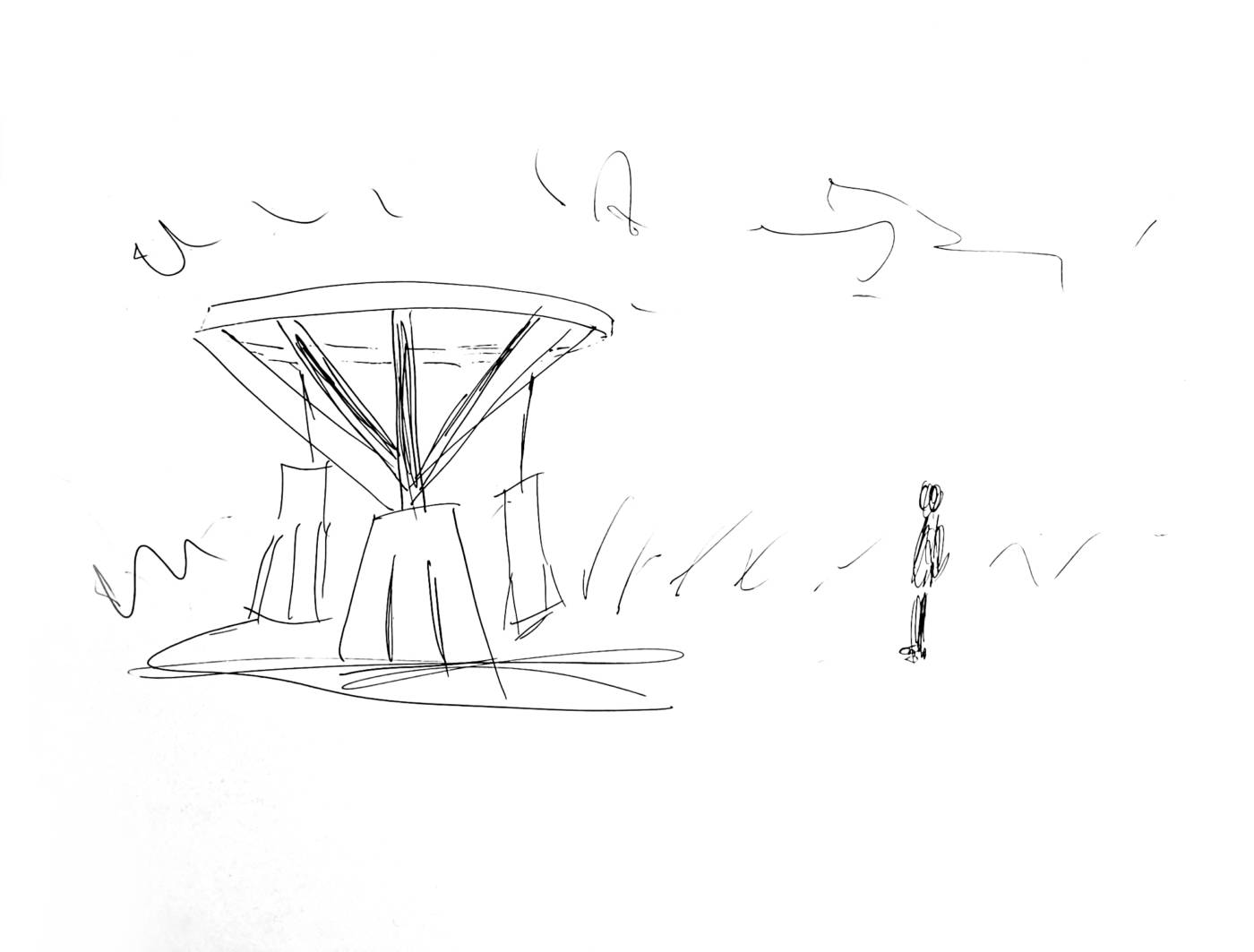

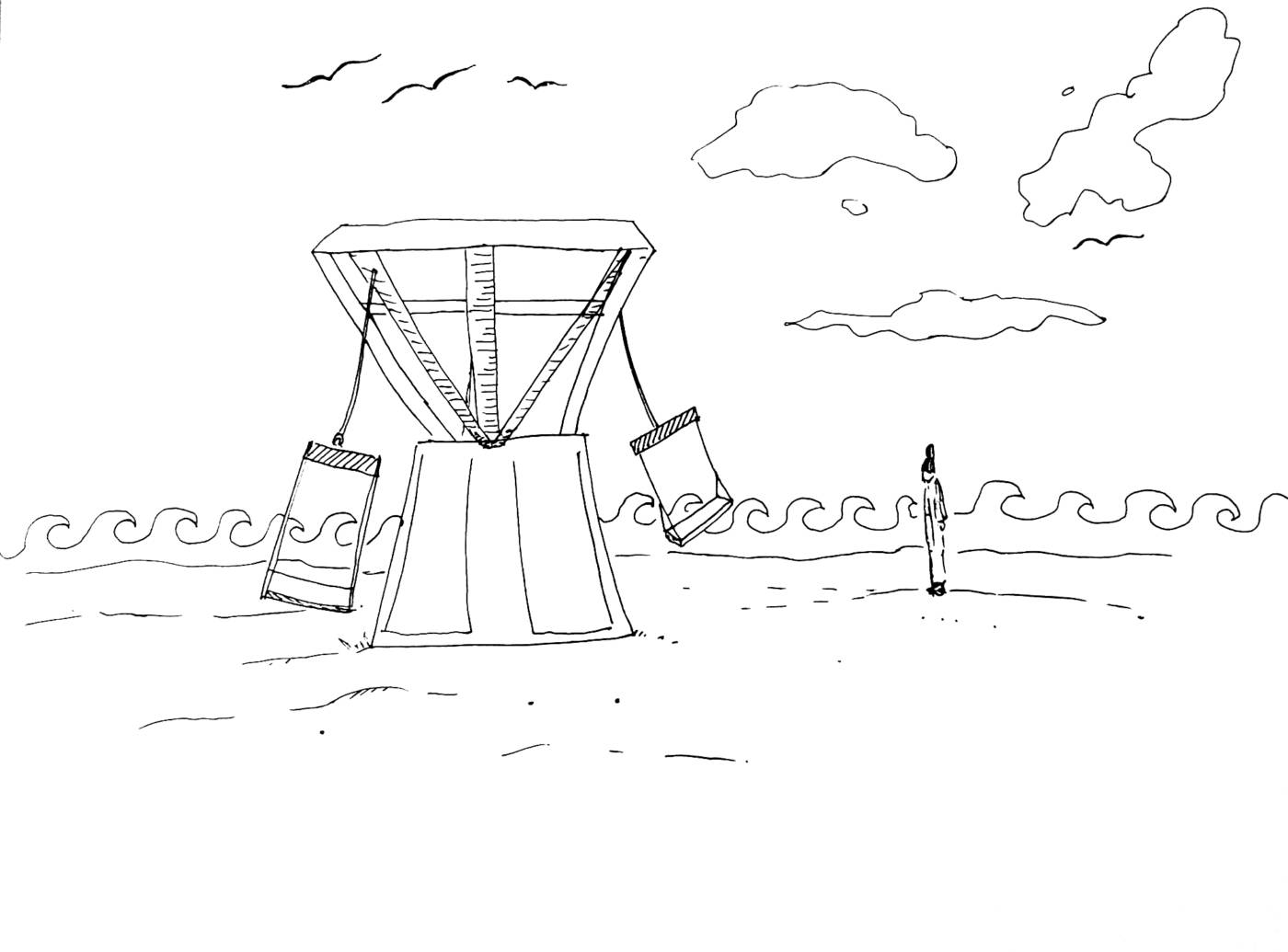
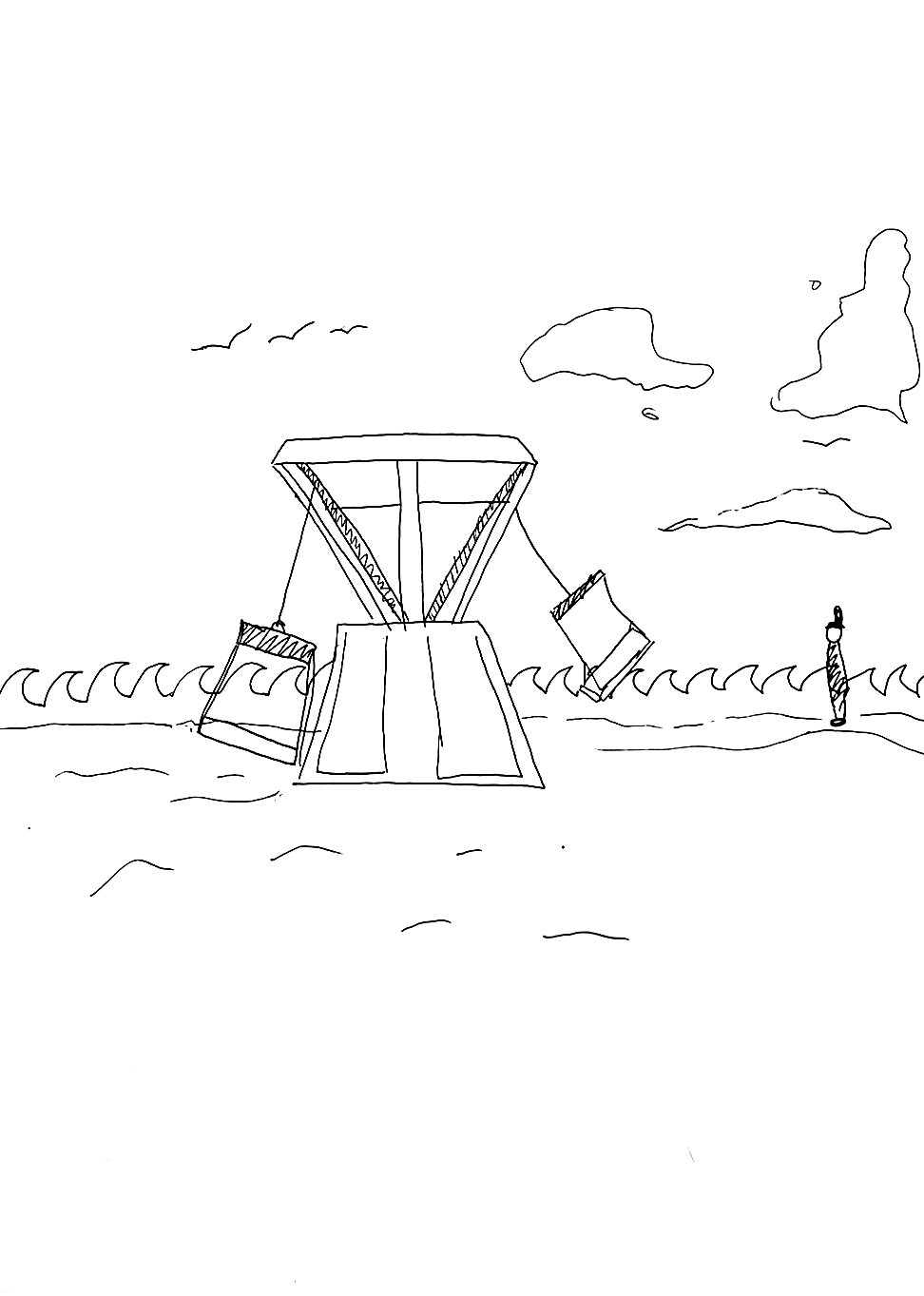
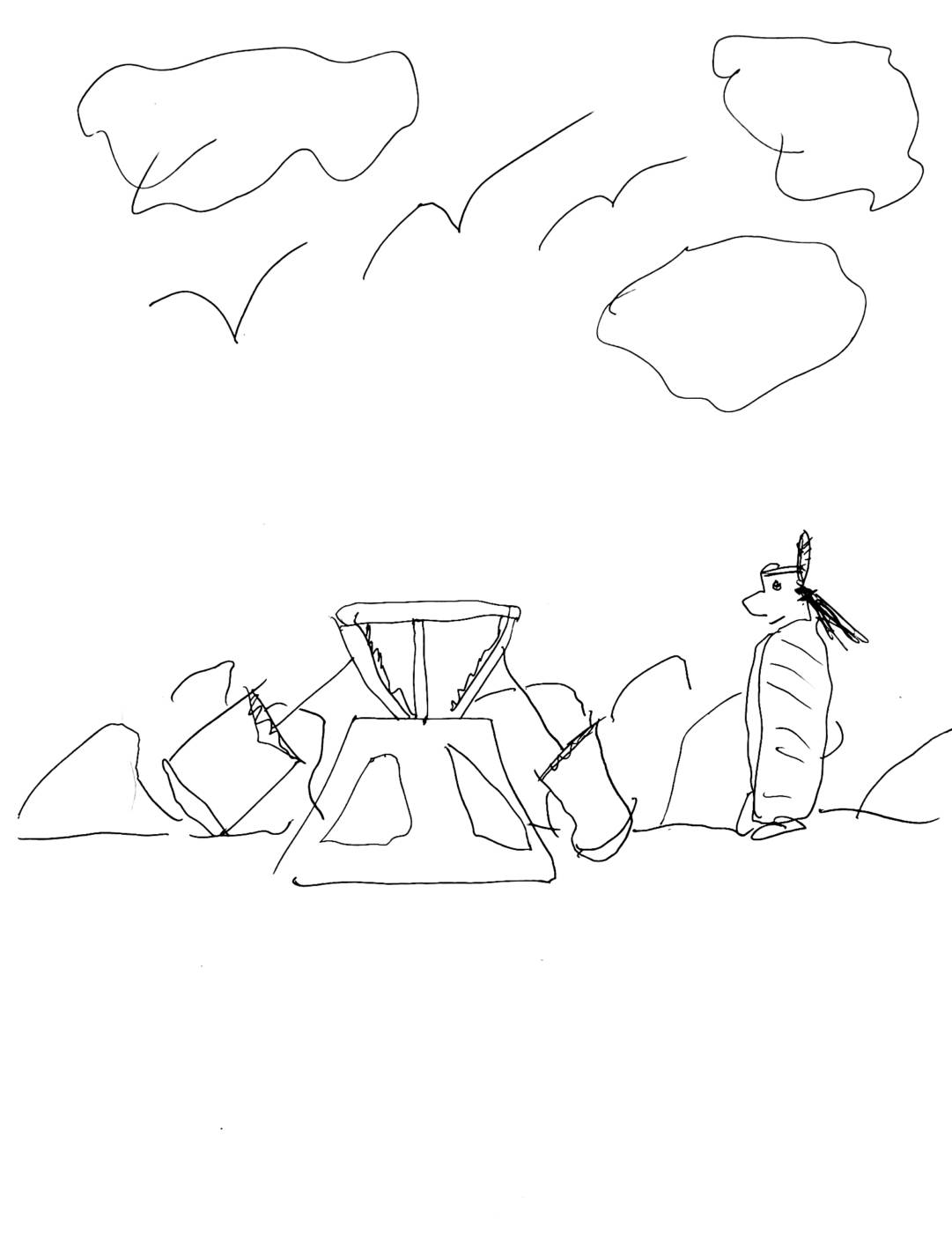
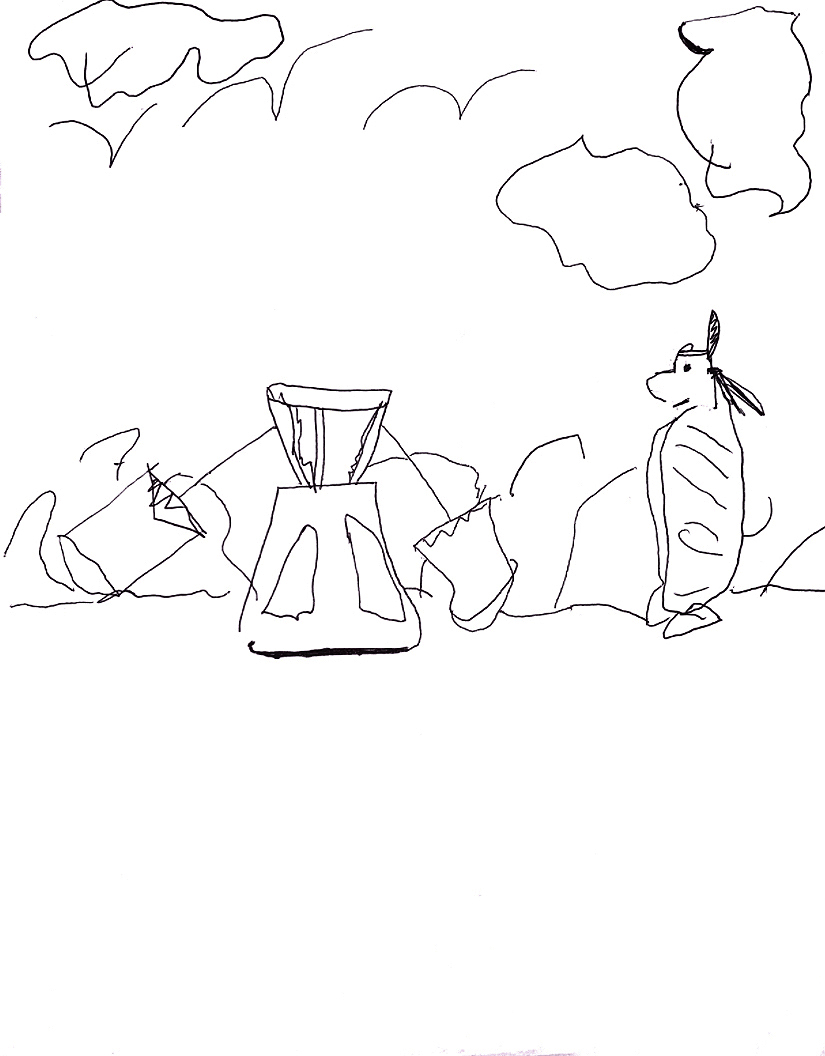
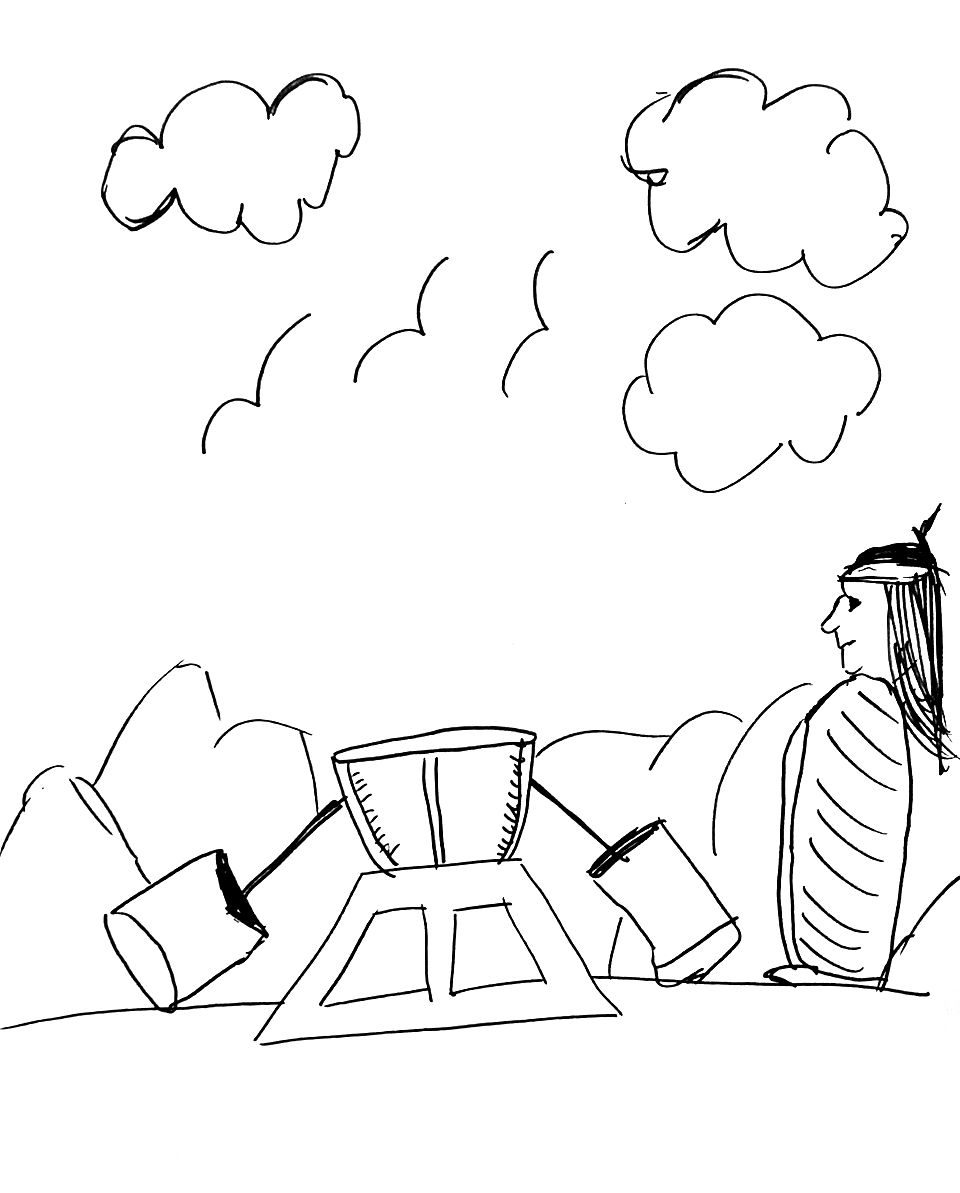
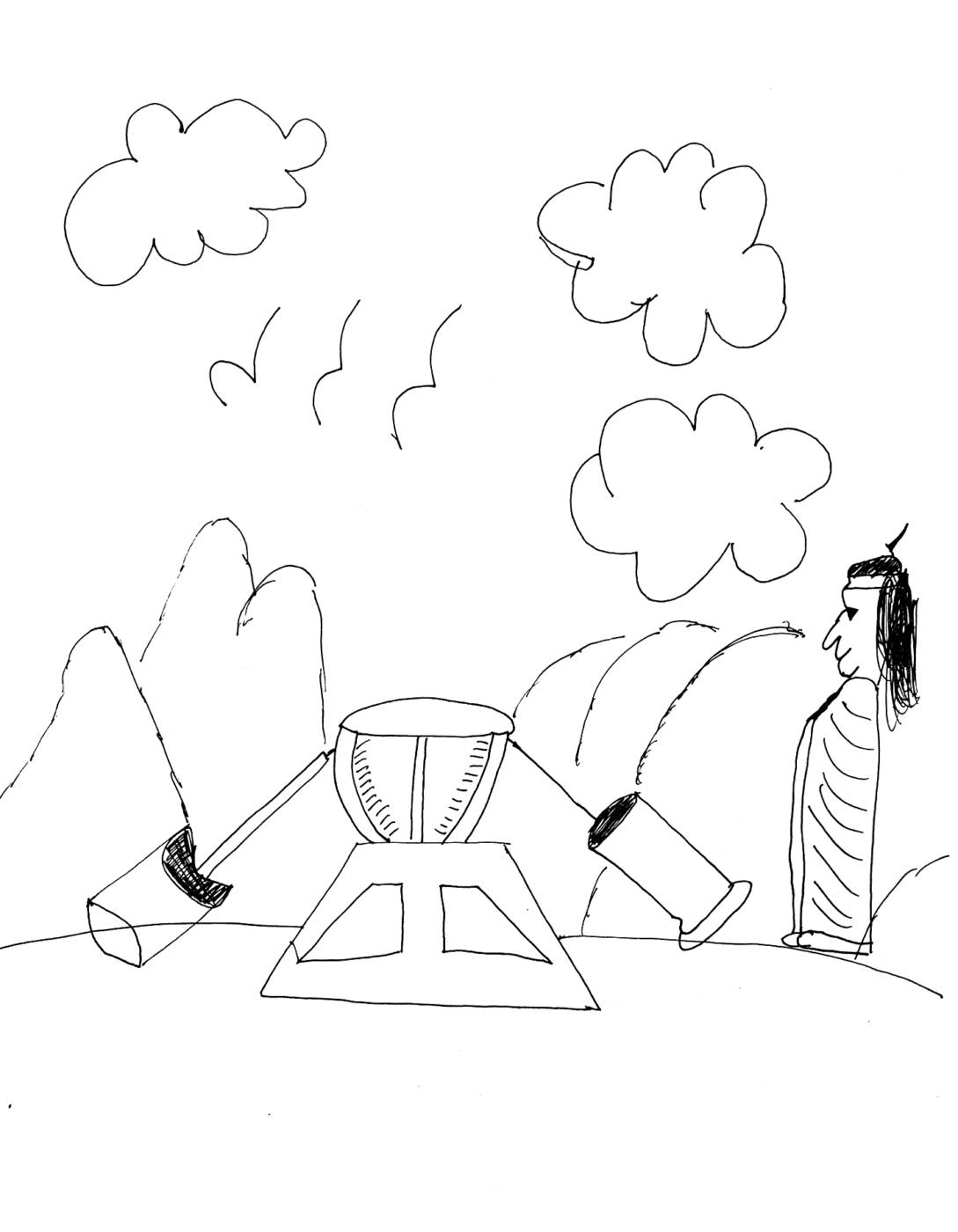
There is a lot to unpack here! When I set out on this idea, I wasn’t sure exactly how much the image would change, but in only 9 drawings there have been a significant amount of changes! There’s the grass that turns into water, which turns into large mountains. Clouds that turn into birds. The carousel becomes tinier than the figure and is nearly recognizable as a drum (as some people were calling it). The proportions and scale all vary wildly. Not only that, but the orientation turns from landscape to portrait! The figure is interpreted as an indigenous person by the end. It’s all very fun to witness how it changes each time it’s passed off to someone new. At times, people were confused by what they were looking at, but of course, the task asked them to recreate it anyways. I believe this is absolutely a problem encountered during communication. How often do we think of something – be it a feeling or an experience – that we just can’t exactly quantify? There are no precise words to really explain, so we are forced to draw analogies and become less literal. And when telling stories, our meaning, context, and words are often lost when it’s passed through more people. It inevitably changes.
Week Nine: Audio Art
For this audio art, I really wanted to experiment with found sounds to tell a story. The modern world is very loud and noisy and the definition of “peace” may have changed for some people.
Week Seven: Buttons!
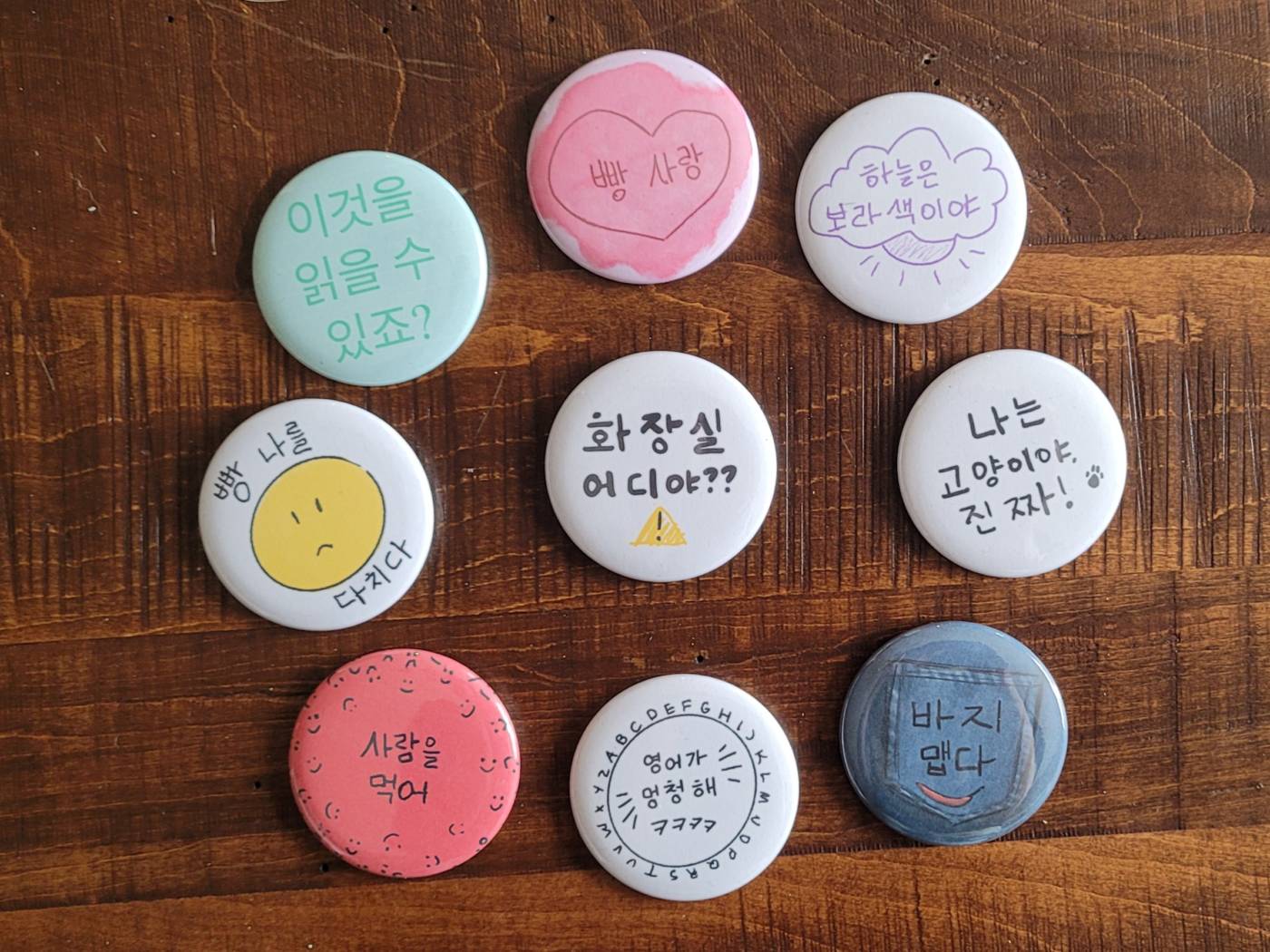
For my buttons, I really liked the idea of making playful/funny/provocative sentences in another language. Some of them are clowning the fact and expecting that they can’t be read, such as “이것을 읽을 수 있죠?: YOU CAN READ THIS, RIGHT?“, and “영어가 멍청해 ㅋㅋㅋㅋ: ENGLISH IS STUPID LOL“. Some of them are just downright ridiculous, such as “나는 고양이야. 진짜!: I’M A CAT.” and “바지 맵다: SPICY PANTS“.
I decided on “사람을 먹어: I EAT PEOPLE” because of the way that the language is structured. the “을” character is an object-marking particle. Essentially it tells you the function of the noun in the sentence. “을” denotes it as the object which the verb is happening to. Versus “가/이”, for example, which denotes that this object is doing the verb. So changing only that particle in the sentence completely changes the meaning from “people are eating” to “[subject] eats people”, in this case the context would tell us that the sentence is “I eat people”.
빵 사랑 and 빵 나를 다치다 (“BREAD LOVE” and “BREAD HURTS ME”) came about because I have a strong intolerance to wheat. Hence, I love bread, but also it hurts me.
I wanted these all to be humourous and sort of like an “inside joke”. I debated whether to strictly keep them text or to include colours/drawings. The reason I chose the ladder is because I believe it helps to draw in the curiosity of English viewers. Apart from not being able to read them, they’ll now have small contextual clues to peak their curiosity.
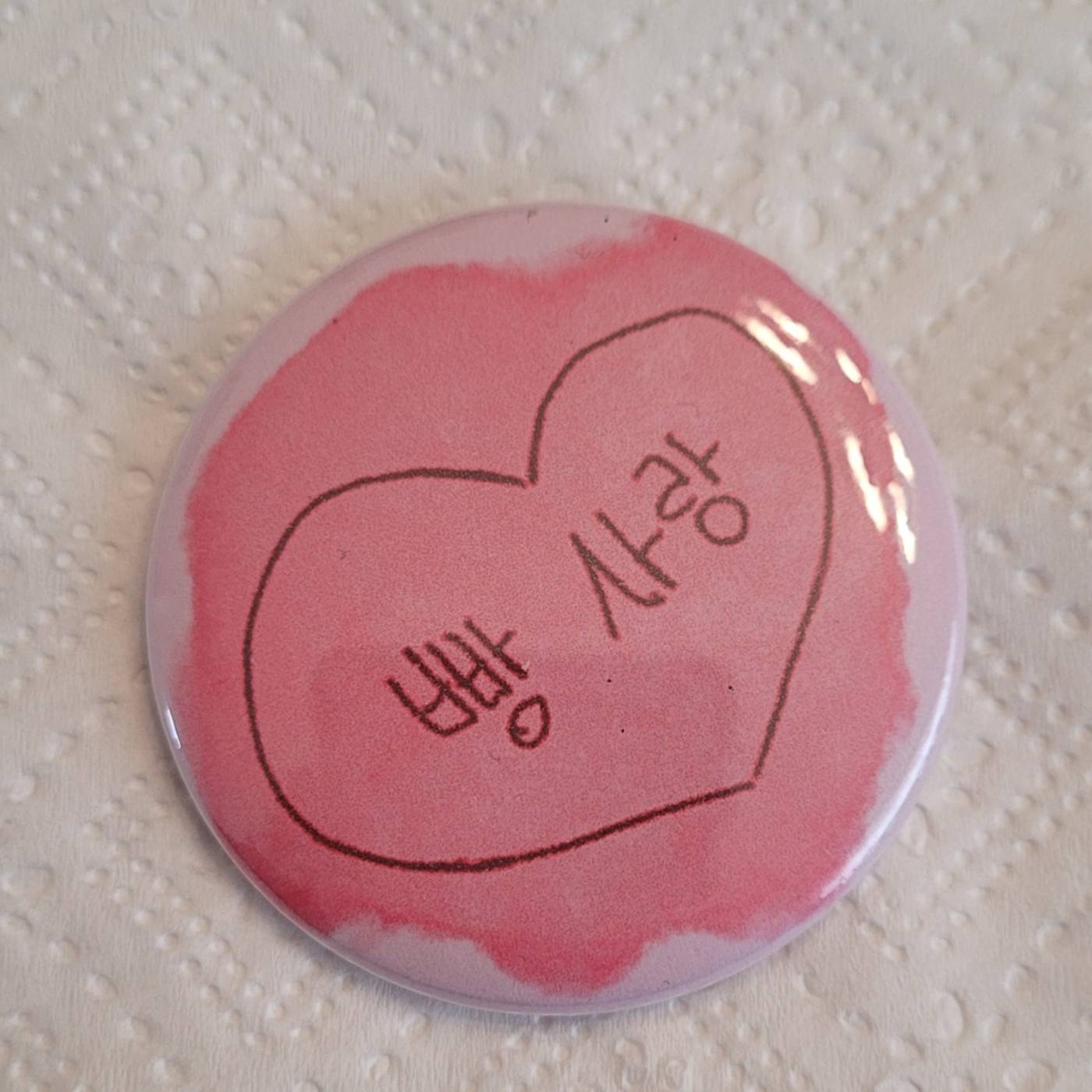

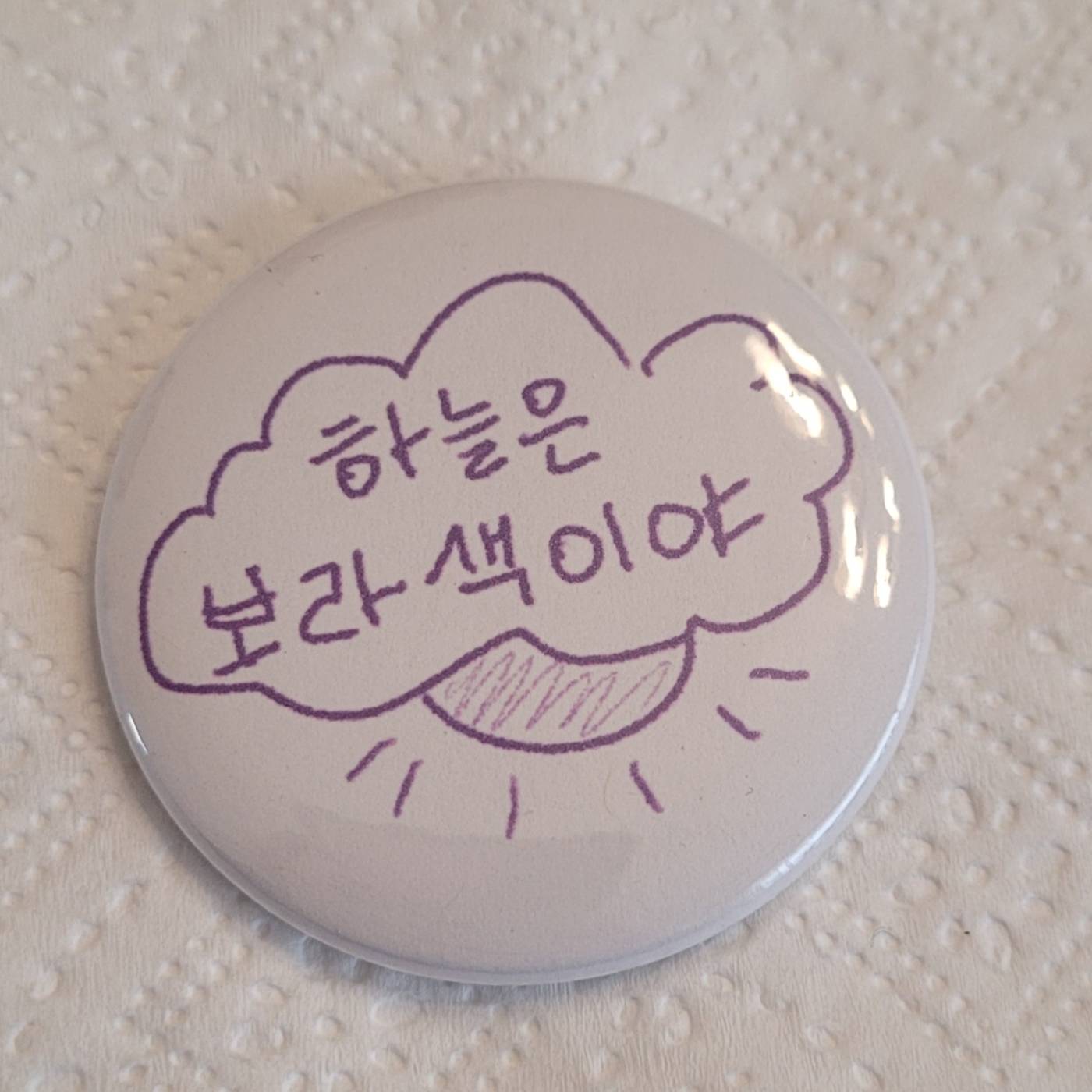
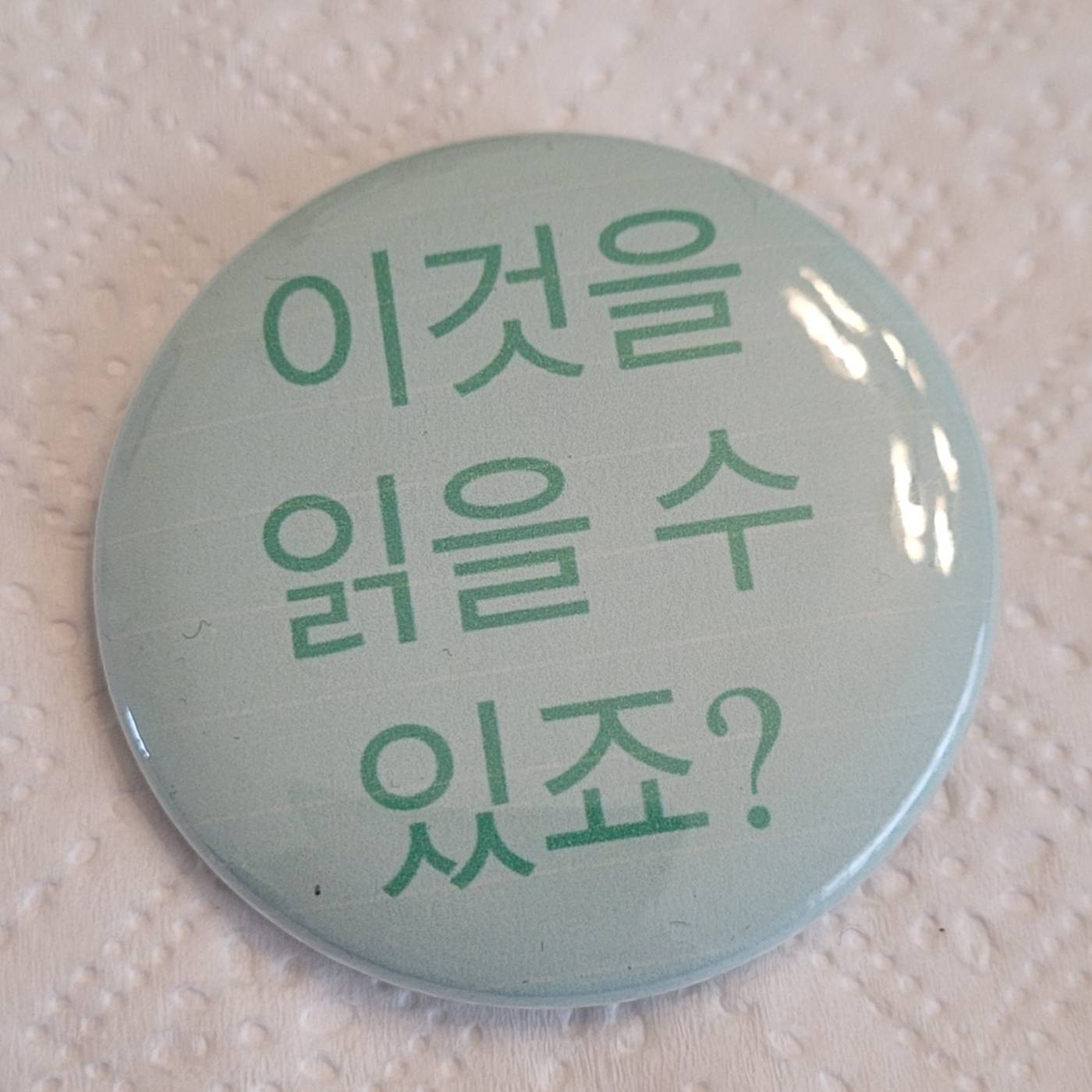
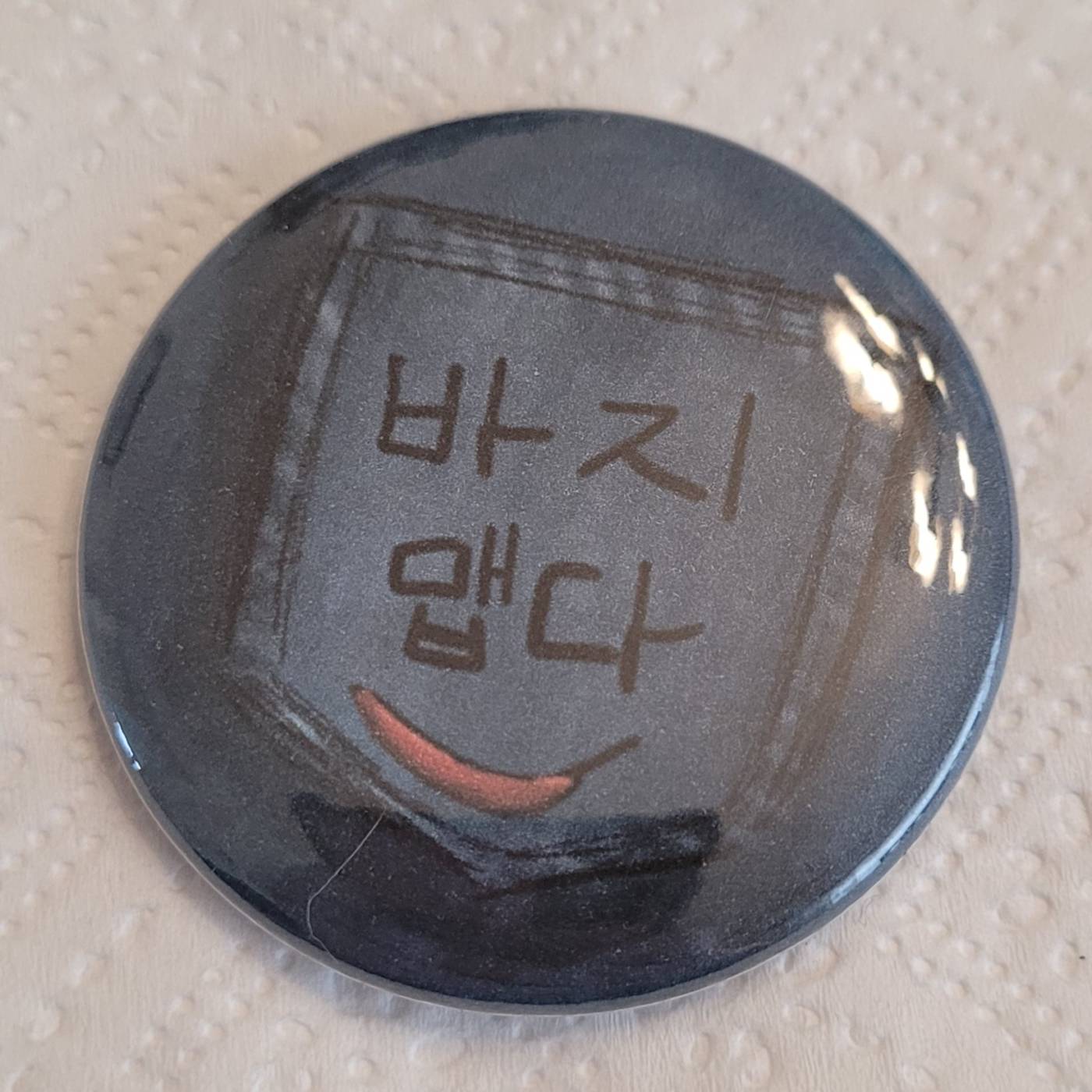
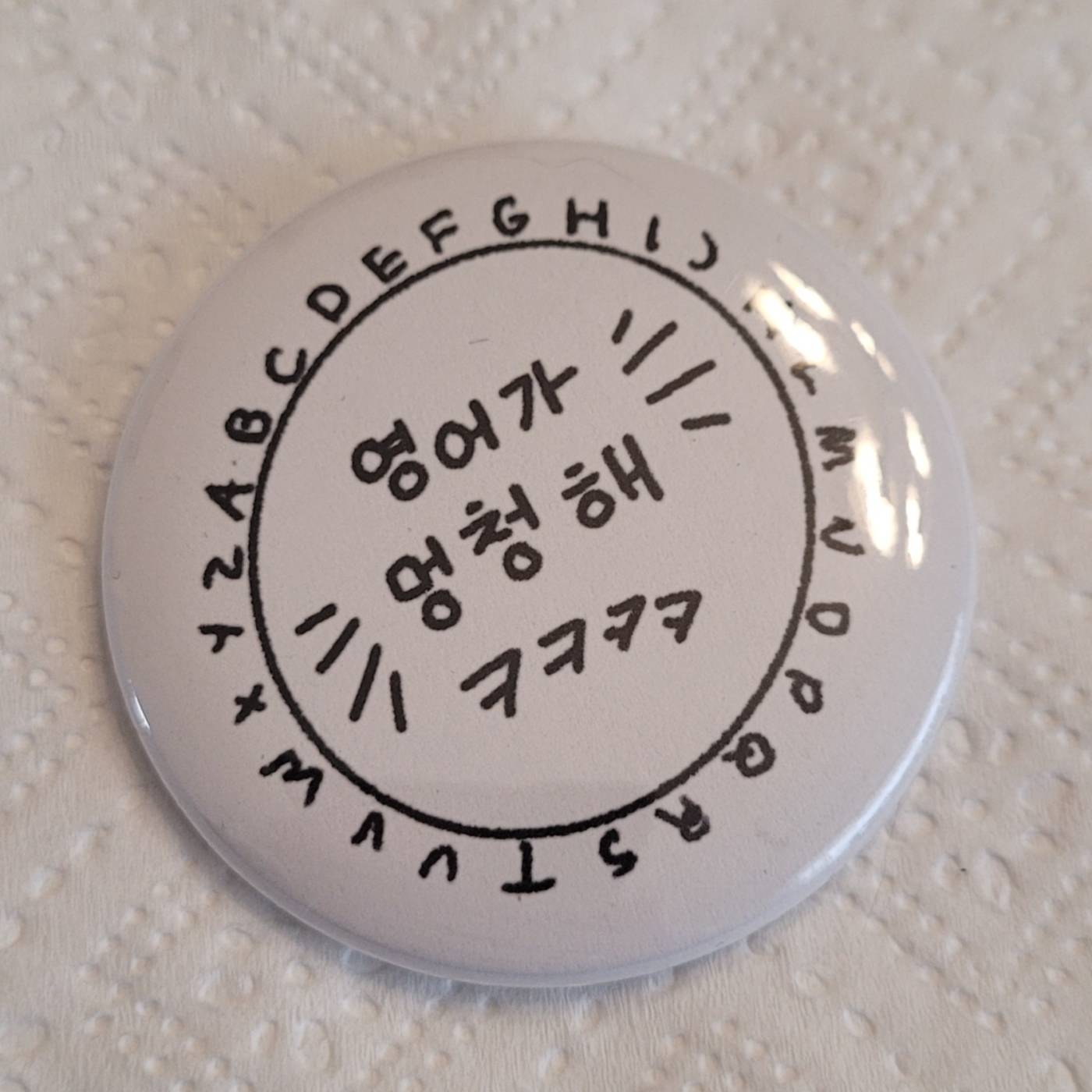

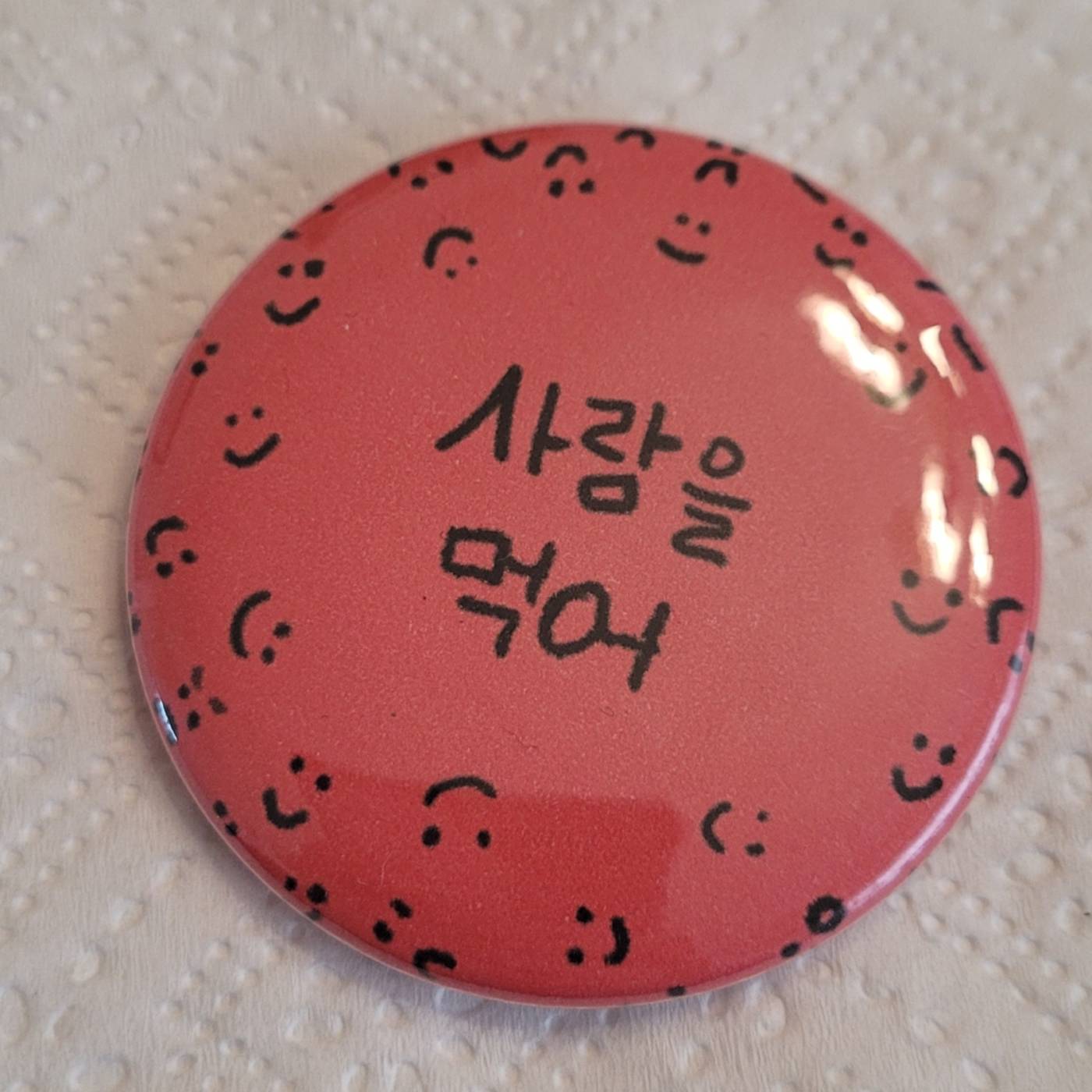
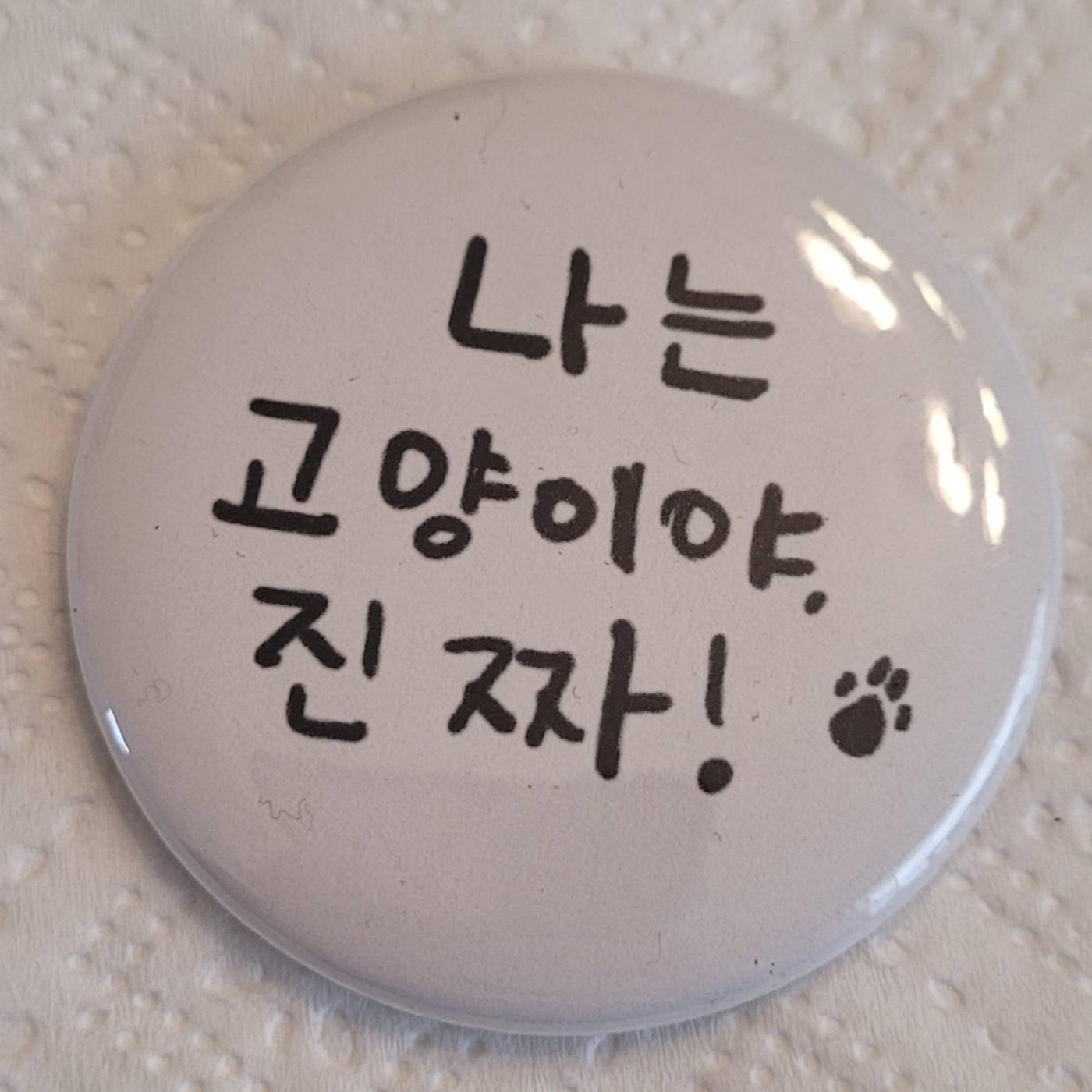
Week Five: Faces

Image 1: Using my cat to change the shape of my face. If you think about this image in the terms of the silhouette it would make, you definitely wouldn’t recognize it as human. I also really like how this shot came out because it looks like my cat’s head is growing out of my head.
Small disclaimer: Despite him looking very alarmed, he wasn’t upset by this at all. I did have to wake him up from a peaceful nap, however, and bring him to a part of the house that he doesn’t usually go. He was just confused.
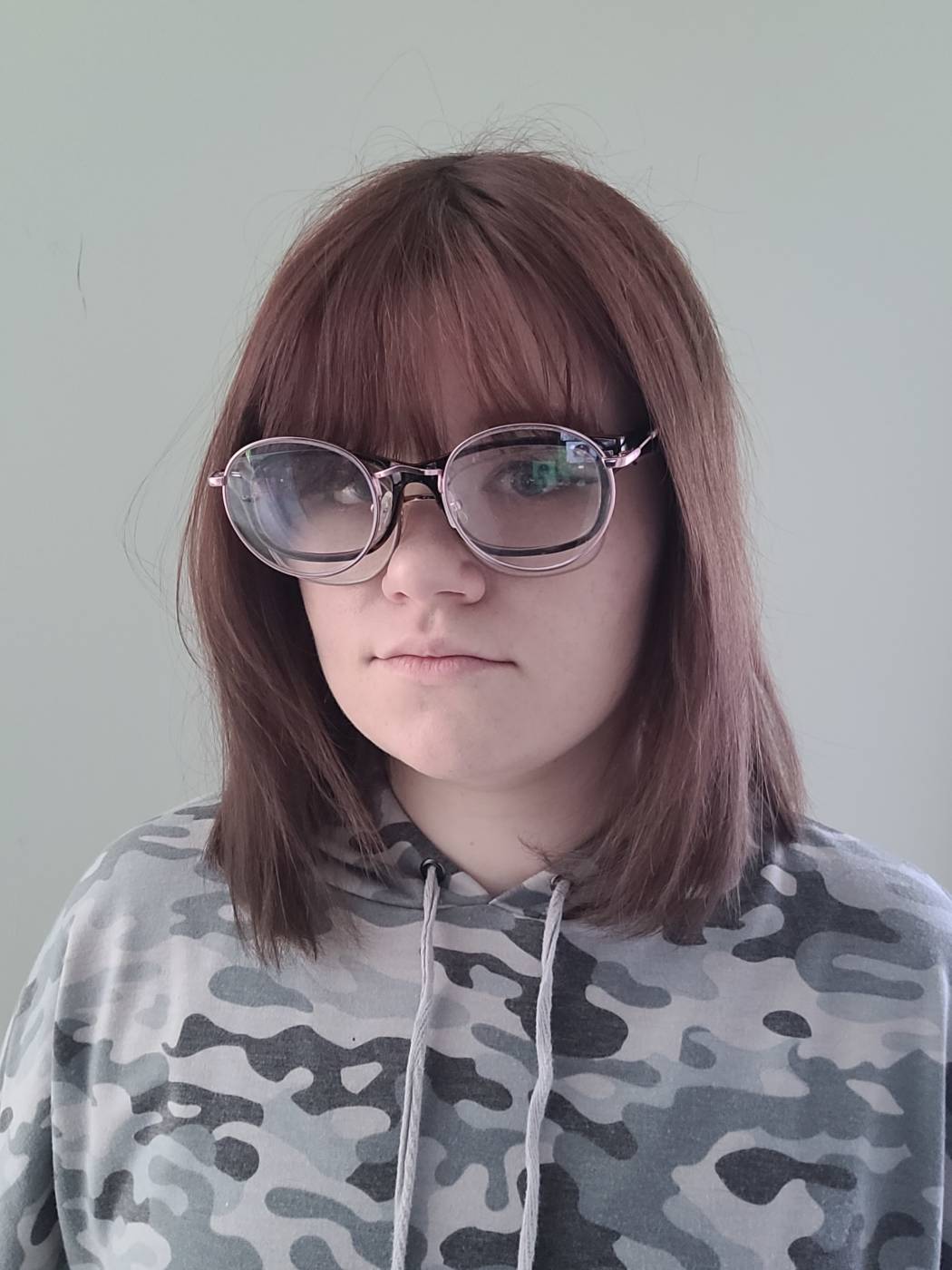
Image 2: For this one, I collected as many pairs of glasses around the house as I could find. (Which turned out to be 3.) I wore them all on top of each other, which completely changed not only my vision but also provided a very strange goggle-like effect. Even though I wear glasses every day, the resulting image is someone who feels unrecognizable. (This image has been called a “minion” by my parents.)
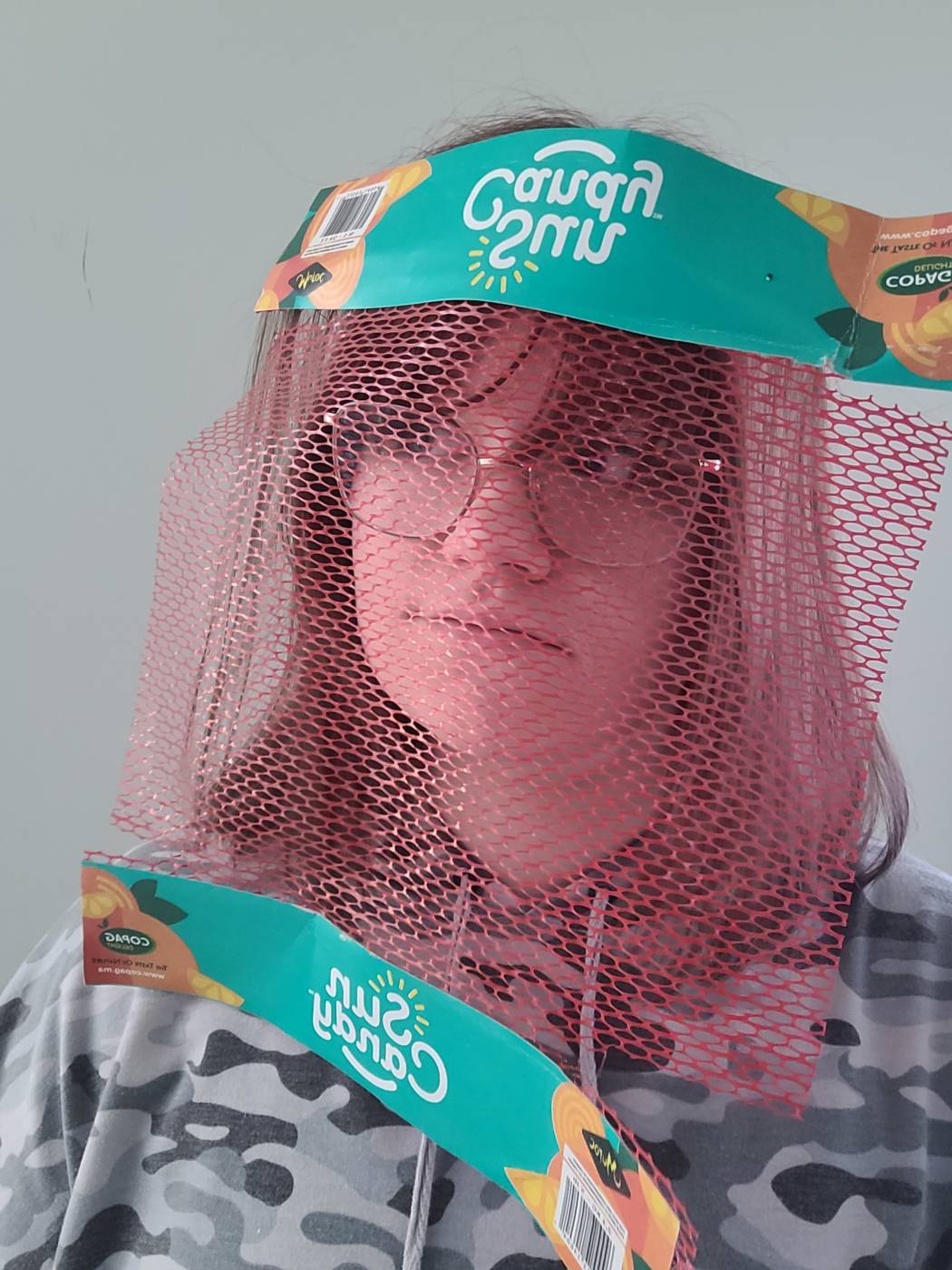
Image 3: Lastly, my favourite is this one! This is the top mesh wrapper from a crate of oranges. It creates an interesting colourful veil, and transforms the colour of my face to look as though it has a sepia filter on it. I also look a little more grainy and distorted, as if the pixel quality is bad.
Week Four: Pandemic Art
Week Three: Defenestrate
Image Gallery: 4 shots of my guitar in-air, followed by 4 shots of it landing in the snow. 1 experimental shot of dyed water being thrown.
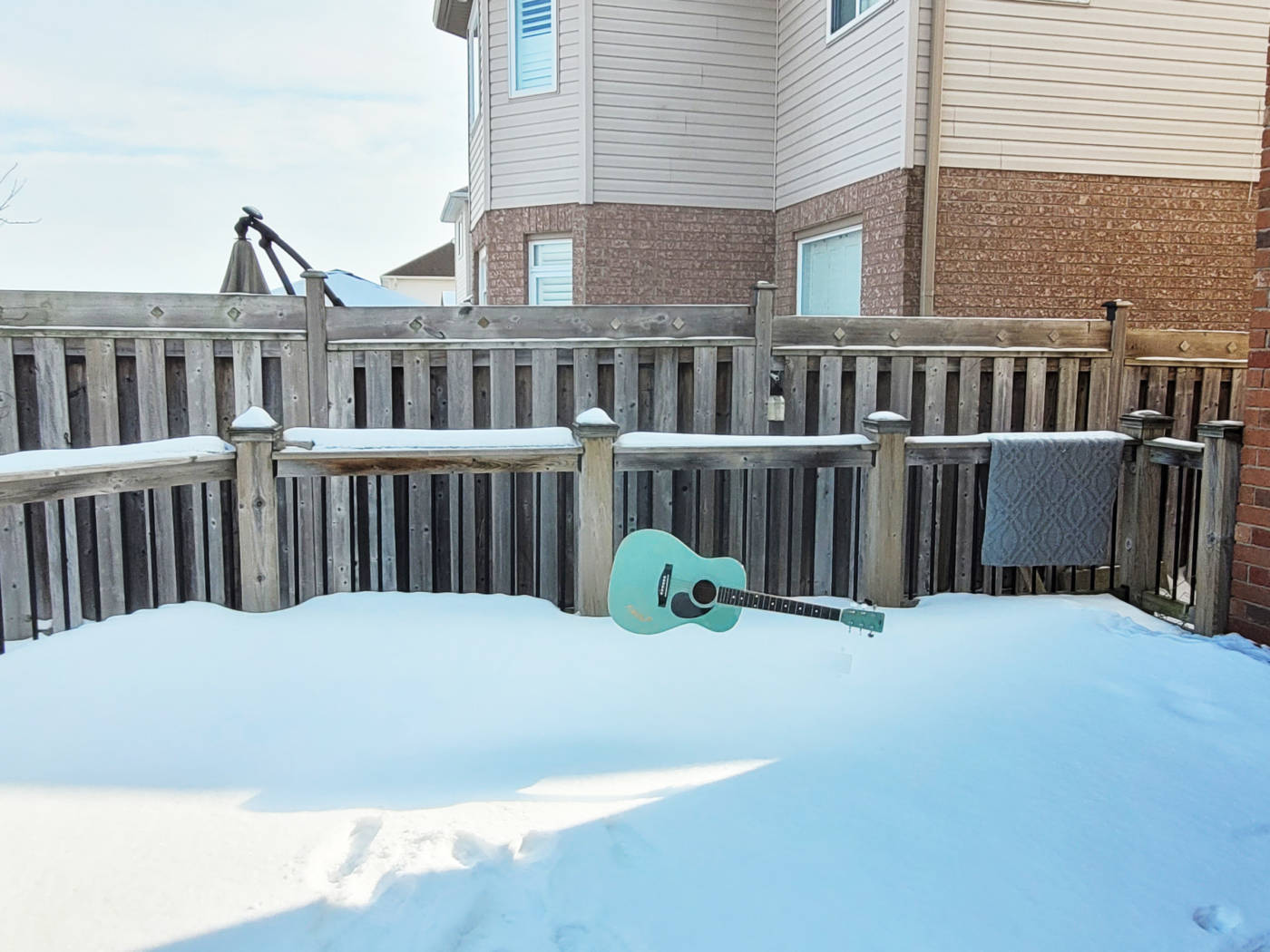
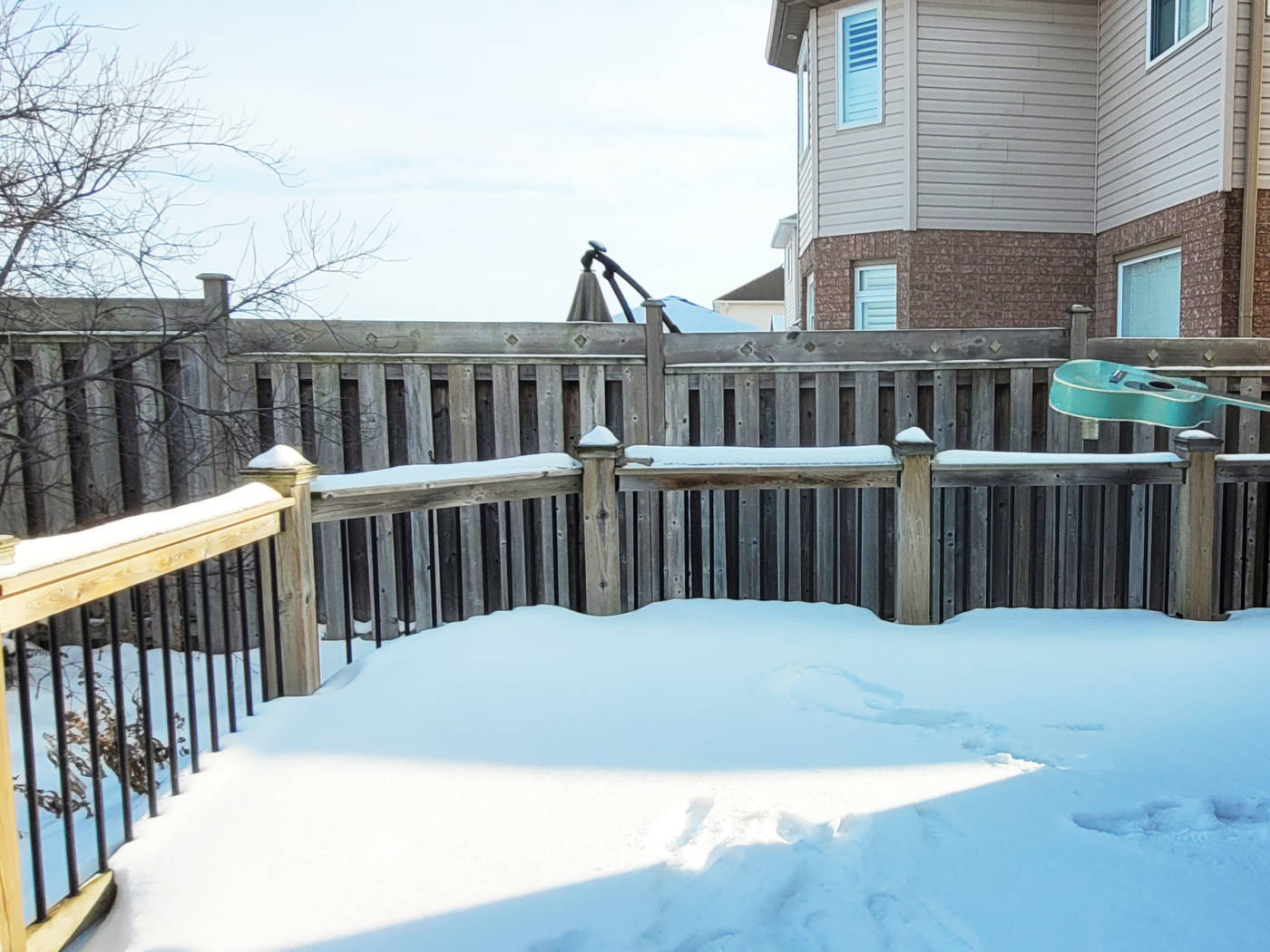
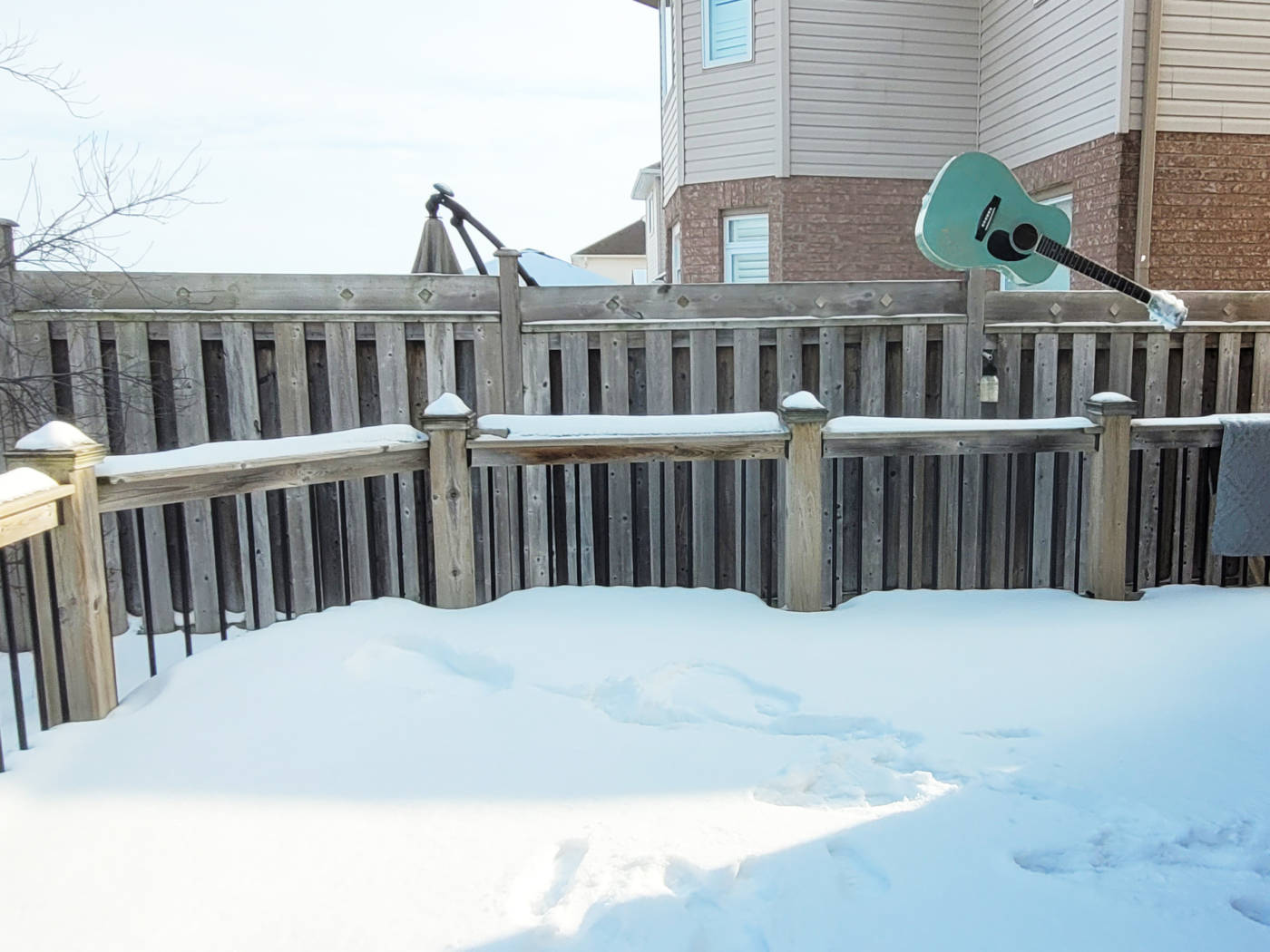

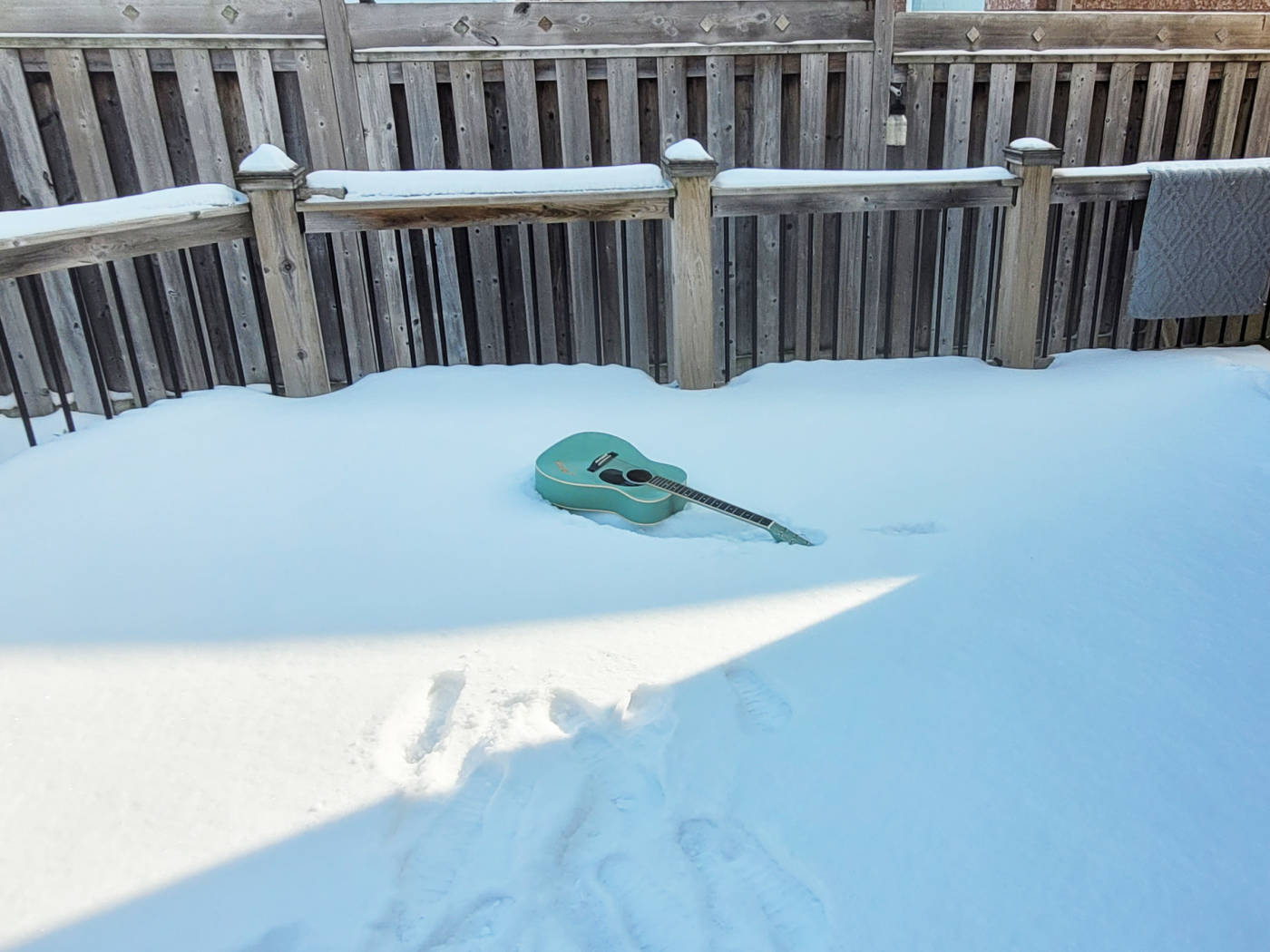

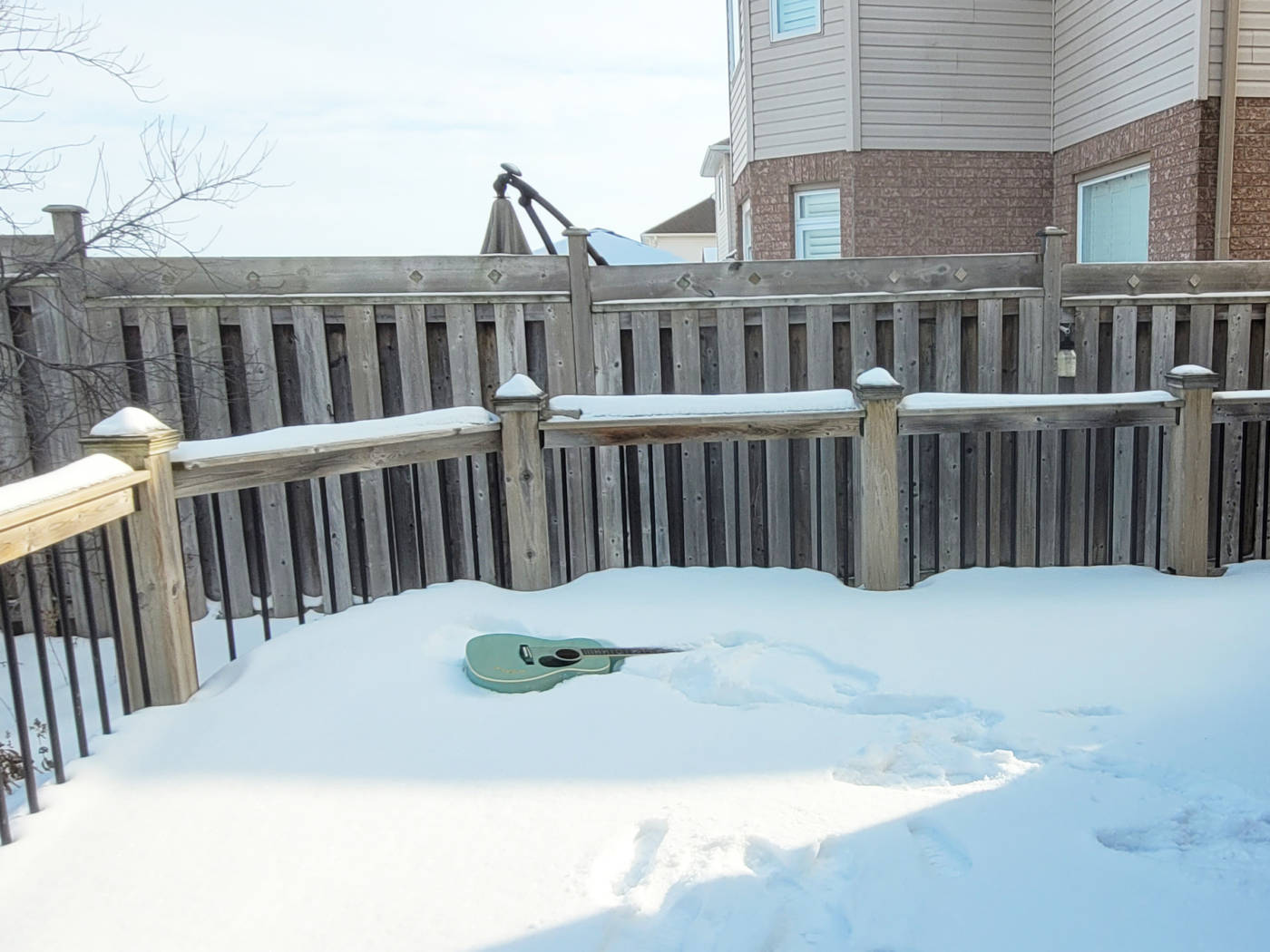


FINAL IMAGE:

This is the first guitar I ever owned and despite the fact that I never play it anymore, it holds incredible sentimental value. I got it when I was probably nine years old. This is the guitar that I learned to play on, and it lasted me for a long time before I was gifted an upgrade. At a certain point in my life, visual art and music were of equal importance to me. My dad and brother are both musicians as well, so it was easy to be inspired. As I was growing up, though, I realized how finite time was. I made a conscious decision sometime in high school to focus more energy on visual art than playing guitar, piano, singing, and writing music. These are all things I still like to do and could still do, but I never have the time for it in my current life. I chose something else instead of it. And while I wouldn’t change that were I to go back and do it again – I still can’t help but feel as though I’ve turned my back on something I love.
So, what we have in this photo is a visual representation of me throwing out music in the name of art.
Something very interesting about this image, I find, is that there is a strange ghostly impression of the guitar. I did not manipulate the image in any way to produce this, and my only guess is that it has to do with the frame rate. I would have imagined that motion blur would happen, instead, but this was a very unexpected (although not unwelcome) outcome! I feel as though it adds to the image.
Week Two: Marina

Final Update: I’ve finally felt well enough to do it! I decided to sit under my dining room table. It’s very cramped and I’m a bit tall, so by the end of the hour I was in a lot of pain from keeping my neck in a certain way. It was interesting, though, because directly in front of me is the front room where my mom’s computer desk is. She’s been working at home ever since the pandemic began, so it was different to sit and listen to her work. She often speaks to herself out loud, especially when she’s drafting an email. She would also become distracted sometimes. By the pets (we have a cat and a dog), and by her phone, which I would hear her play videos off of every once in a while, and laugh. My mom admitted that she didn’t know I was under the table, too, even though I was sure she heard me making noise as I moved the chairs around. I asked her to take a photo when my alarm went off, and she was really surprised (and a little spooked) that I was under there.
[update as of Jan 31st: I’ve still been sick and it’s been impacting me every day. When I feel better I will do this project, but I’m not able to push myself right now]
This is likely disappointing, however I (seem to have*) caught COVID and have been having a hard time doing just about anything since Thursday so unfortunately I was unable to take part in sitting still for an hour, despite all of the ideas I have had. I was planning to sit still in the laundry room, a place I never go unless I have to. I think it would have been interesting to sit in an environment that is designed specifically for one task, and to be there regardless of that. I was hoping I’d feel better by now but I don’t yet 🙁
*it’s so difficult to get your hands on a test these days
I thought that Marina’s work was very thought-provoking and inspiring. Some of it disturbed me, too, and I would argue that it could be a dangerous message to consider it art (such as the instances where she cut herself). Despite that, though, most of her work is stuff that I found personally fascinating. I especially liked the “Artist is Present” due to the emotional reactions she was getting from those who sat with her. It was an on-going display of vulnerability which allowed others to so instantly relate to her.
There were also a bunch of interesting quotes throughout the documentary, such as:
“She’s in love with the world.”
“People barely have an attention span at all.” (This becomes increasingly true every passing day.)
“So many people have so much pain.”
“If I’m not nervous then I’m nervous why I’m not nervous.” (Definitely relatable.)
“An artist should avoid falling in love with another artist.” (A very personal anecdote which I don’t believe applies broadly to others, however perhaps it could be said that there should be caution when merging personal relationships with working relationships.)
“Empty yourself. Be able to be present.” (I really like this. It sounds so simple, but it’s really quite difficult. It’s good to have the reminder.)
Week One: Kilometer
When Sol Lewitt says that “the idea becomes the machine that makes the art”, I think what he’s saying is that the process is set in motion originating from his thoughts. Without his original conception and planning, there’s no further movement – no objects are made. It’s only with his idea and direction that any of his work gets made, whether or not he has a hand in it.
In conceptual art, I think the value is predominantly placed on the idea. I think that’s how the artist views it, and I think that’s how the viewers who come to appreciate it feel about it, too. Not everyone agrees with the idea that the artist doesn’t have to make their work. Some people might draw terrible connections to Damien Hirst, another artist who often does not do any of his ‘work’ beside the planning stage. In this case, this artist is easy to be mad at – he’s been in the spotlight of controversy in the art world for a long time now, and the fact that he doesn’t make much of his work is really just the icing on the cake.
However, I don’t think that there’s anything inherently wrong with this practice, in and of itself. As long as proper credits are given to the team of artists who are making the work, then I don’t see why art must be a singular, solitary thing. Teamwork and collaboration can be incredibly valuable. Another thought that comes to mind is how an architect may draft the design for a large, beautiful building. I don’t think anyone would expect them to go out there and make it all by themselves. In fact, I think most people would understand that they aren’t required to lift a finger in the actual construction of the building. No one would question whose work it is.
—-
Yoko Ono’s work is something that I would consider to be ongoing performative art. Through these simple instructions and the fact that these instructions are available in print and online, the possibility that someone is out there enacting her artwork is continual. I would argue that there are no boundaries around these artworks. They are fluid, open to interpretation, and by the nature of it, out of reach. There’s no way for anyone to keep track and see all of the reproductions and enactments that she has created.
I believe that Ono is very simplistic in her instructions which allows a lot of room for interpretation. For example, one person may hear, “Watch the sunset, feel the earth moving”, and perform this outdoors. They may sit for ten minutes and try to remain steady and calm, close to the ground. Another person might hear this prompt and decide to open up a Youtube video and sit in the comfort of their home as they watch a digital rendering of the same thing. They may choose to “feel the earth moving”, or they may not. It could be written off as something impossible.
Everyone will encounter these prompts with different mindsets, attitudes, levels of care, and interest. If someone is telling them to perform a prompt, they may feel less attached, and more that the words are a chore. However, someone who has purchased the book and feels a strong connection to certain ideas may feel more impassioned. Regardless, and I think Ono would agree, there’s no right or wrong way to perform any of her art. In fact, I think there’s something really interesting in all the unique (and even the similar!) ways that people interact with her ideas. For that reason, I find this sort of work very fascinating and intriguing!
—
In Walking in an Exaggerated Way Around the Perimeter of a Square, Bruce Nauman doesn’t focus on the square. In fact, some of the square is off-camera. The attention is on himself, a (mostly) full-body shot. The framing might be considered rather dull, or even ugly, because the floor and the wall make up equal parts of the frame. The lines of tape to outline the square are somewhat sideways due to the angle. It even appears that the camera is on just a hint of a dutch angle. Apart from that, the background is messy and cluttered. It feels a lot like he just set up the camera without a second thought and pressed record.
Due to this, it strongly gives the impression of a home video, or something that should be relatable. However, what he’s doing isn’t something we would normally do. It’s just walking, sure, but it’s slow and mechanical, perhaps experimental. It’s this that triggers a realization that what we’re looking at is more performative than regular. At the same time, though, the ‘carelessness’ of all the other factors (framing, set design, etc) make it feel as though we’re just watching someone do something. It doesn’t feel much like we’re watching something that is staged. It feels very raw and inexplicably vulnerable.
The framing in Bouncing in the Corner No. 2 Upside Down is much more disorienting than the last example. Being upside-down tilts everything so that it feels somewhat unfamiliar. Even though, undeniably, it’s easy to identify that we’re looking at a man. We aren’t used to seeing a man upside down like this, and especially strange is the bouncing action that he’s taking. It’s the simplicity of it that is genius. It allows for so many avenues of thought. For me, turning the video upside down resonates differently than if I’d seen it the right way up. It almost feels like we aren’t supposed to be able to see this, as if this were a forbidden angle. It becomes harder to disassociate from your role because it puts more emphasis on the viewer. Normal framing is done in such a way in movies to not rip you out of believability. When it is done well, it stops feeling like you’re watching something and it’s easier to get engrossed in the characters, plot, visuals, etc. But in this case, when the framing is one of the first things you notice, it immediately reminds you that you are a viewer.
My Kilometer: animation of a cat running a kilometer
Wishing Tree
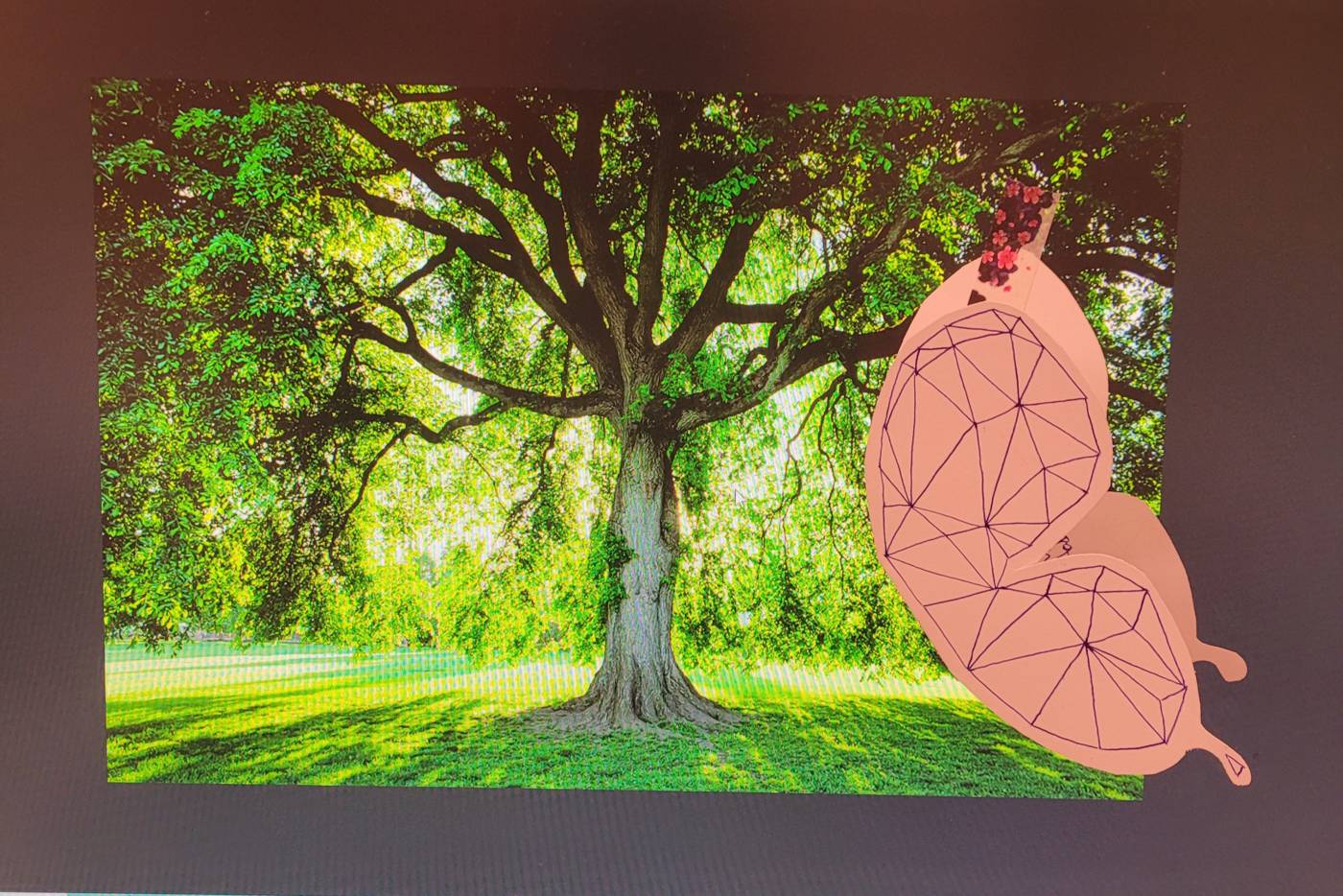
This is my wish! I decided to cut it out as a butterfly to adjust the prompt and doodled a bit on it, because why not! And taped to a digital tree so that I didn’t have to face the elements outside.
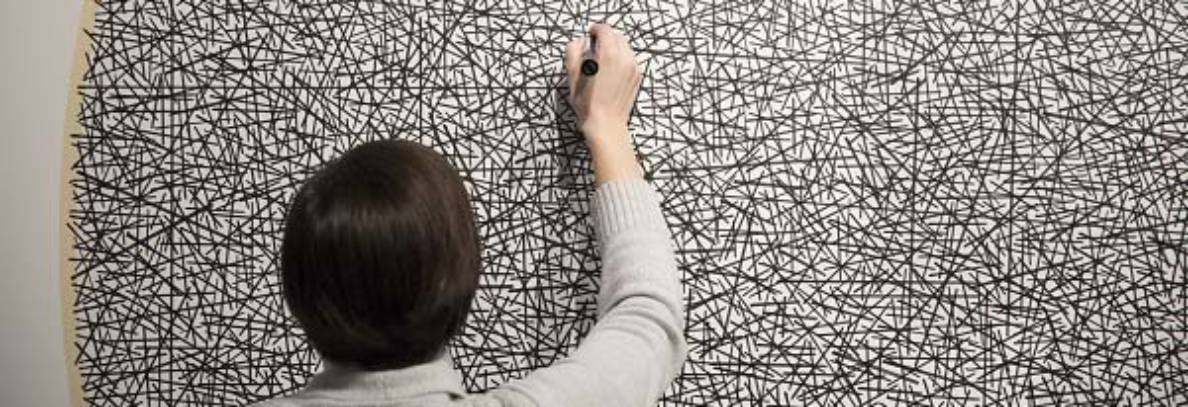
Hi Kayla,
I appreciate how hard it has been for the past few weeks, and how much you have worked despite your obstacles and have completed projects, attended all your virtual classes, made some really thoughtful and original responses to the exercises. I see real evidence you get the conceptual modes of thinking, and strategies of conceptual art, and are willing to push yourself and engage (as much as possible!) with the world. I hope you will stay in Experimental, you belong here!
Hi Kayla, I see your finished buttons, your Audio piece (I wish there were a few more notes/context for this one!) and your final Conceptual Portrait experiment discussed in class. I like how you think like a scientist in that one especially! It was so great to have you in the class Kayla, thanks for your participation and your clever engagement with the course materials, I really hope we’ll see you again in Experimental 2! You belong in Experimental Studio!
Diane